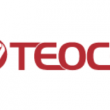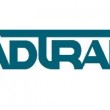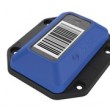

TEOCO, a provider of engineering, assurance and analytics solutions to communications service providers (CSPs) worldwide, (more…)
November 9, 2016
Posted by: Avadhoot Patil

ADTRAN®, Inc. a provider of next-generation open networking solutions, says it is now enabling the IT department to regain control of the Wi-Fi network with the launch (more…)
November 8, 2016
Posted by: Avadhoot Patil

Small Cell Forum (SCF) has now published Release 8, a practical working guide detailing technical and commercial best practice for operators planning to deploy Network Function Virtualisation (NFV). (more…)
Posted by: Avadhoot Patil

CEVA, Inc. the licensor of signal processing IP for smarter, connected devices, and HMicro, a wireless solutions firm developing integrated products for medical, industrial and the broad Internet of Things (IoT), (more…)
Posted by: Avadhoot Patil

The cloud and virtualisation have simplified enterprise technology and made businesses more agile. The monolithic IT stacks of the past have been replaced with infinite scale and configurability. (more…)
Posted by: Avadhoot Patil

Aspect Software, a provider of integrated consumer engagement, workforce optimisation and self-service solutions, has appointed Maxine Allard to the role of senior director, Digital Identity, EA. (more…)
November 7, 2016
Posted by: Avadhoot Patil

When we released Verizon’s annual State of the Market: Internet of Things 2016 report earlier this year, says Tony Judd, MD UKI and Nordics at Verizon, we were not surprised to learn that enterprises (more…)
Posted by: Avadhoot Patil

As I continue to meet with customers that maintain a network of connected devices, I’m often asked what the future of networks looks like in the IoT-driven world. As we consider wide-ranging initiatives – (more…)
Posted by: Avadhoot Patil

Canonical has released Ubuntu Core 16 for the Internet of Things (IoT), with regular and reliable security updates, and app stores for intelligent connected devices. (more…)
November 4, 2016
Posted by: Avadhoot Patil

Bosch is combining its manufacturing traditions with the innovative spirit of the US tech sector to create Internet of Things-enabled products for a connected world. (more…)
Posted by: Avadhoot Patil